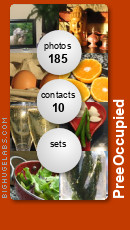(Sohini Mukherjee of New Delhi, India, writes about her first Durga Puja in Guwahati as a 10-year-old with her extended family. )
“Let’s give grandma a surprise this year. Let’s not tell her we’re coming!” Dad’s out-of-the-blue suggestion astonished us!
“Are we going to Guwahati for Durga Puja?” The very thought of it filled my 10-year-old heart with excitement! I had spent the first few years of my life in Guwahati with my maternal grandparents but being an infant then, I hardly had any clear memories of events and places of that time. This, certainly, would be a proper grown-up visit then! Besides, I was thrilled at the prospect of meeting my mother’s mother, who I fondly called mammam, and loved dearly second only to Mom!
It was already Mahalaya and anyone would think making travel plans at this hour was a downright daunting task. Today, Durga Puja vacation means having to draw up elaborate plans at least a month before, if not earlier. But two decades ago, life was simpler and you could go to the railway station, buy tickets to your destination and hop on the train.
So Shasthi morning had me, Mommy and Daddy packing our bags and heading off to Patna junction. Chandaa, the teenage Assamese girl who helped my mom with the housework, accompanied us too—delighted with the prospect of getting to spend a full week with her family in Guwahati.
As the Tinsukia Express rumbled on, I was mesmerized by the sights that kept me glued to the window—the fields, the village huts, the ponds, the rivers, the greenery, and not to forget, the grand spectacle of the Farakka Bridge…My mom took to chatting with the Bengali couple with whom we shared the compartment. They were headed for Malda in West Bengal, and got down at about nightfall.

At about eight in the morning, the train came to a grinding halt at Bongaigaon, and we were told that it would go no further! Whazzat! Floods had ravaged the railway tracks. [With a monsoon that stretches from April to November, floods in Assam are an annual event that nobody bothers about. They don’t get any of the publicity that a foot of water logging in the national capital does.]
But, Guwahati was still far away! A taxi was the next best solution, and soon, all the four of us were again on our way! With the lush greenery and glimpses of local culture all around, Assam by road is even more breathtaking than Assam by rail, and before we knew it, the mighty Brahmaputra loomed into view!
Here too, we found out that the road bridge was under repair and hence closed for traffic! A ferry it was then, with our taxicab, us and a horde of local people, all loaded onto it! Once on the other side of the river, the taxi was unloaded from the ferry and we all hopped on to it again for the last lap of our journey…
Finally, when we reached Grandma’s flat on Danish Road, hungry, thirsty and tired–but with elevated spirits nonetheless—it was way past noon… Needless to say, Mammam and the rest were elated at this grand surprise!
The next two days were spent at the family Puja pandal—our very own Durga Puja, an ancestral traditional ritual which my mom’s family has been organising for the last 200 years! This puja is held in the chandimandap of the sprawling courtyard of the Boro Bari, or the big house, a house which still upholds the joint-family structure and is the place where my mother spent her childhood and early youth…

In the midst of the chaos that a family puja is, I was taken to meet the extended family and duly introduced to each of them with a feet-touching pronaam from my side and the usual exclamation of “Oma! Koto boro hoye geche!” from the other side! With four generations of the family having stayed together, my mom has every kind of relation that one can think of—uncles; aunts; grand uncles; grand aunts; first, second and third cousins, and their wives, husbands and children! So, it’s no mean feat going thru the pronaam routine over and over, mind you!
A visit to my mom’s primary school, the Hari Sabha, was another memorable experience. While I was looking on at the goddess installed inside the school pandal, a loud thunderous sound at my side made me almost jump out of my skin! Turning around, I saw a man beating a huge drum that was all plumed and decorated. It was my first darshan of a dhaaki and his dhaak!
In another pandal, instead of being dressed in fiery red, the goddess Durga and all her attendants were clothed in white paat silk, the special fabric of Assam!
Every respectable Bong worth his or her maacher jhol knows that no Durga Puja account is complete without details of the bhog and the khawa dawa.
But before we mortals get a chance to dig our fingers in the delectable bhog, it is the goddess who must be served first—with a spread of 108 items to be precise, ranging from the humble shaak to the kingly mangsho, the repast completed with an array of the choicest sweets and fruits! Yes, the Grand Lady has both appetite and fine taste!

“What are they for?” I asked my grand uncle.
“They are for the sacrifice which will happen just after the priest completes the daily puja ritual. Do you want to see the boli?”, he asked matter-of-factly.
I just shook my head, too astounded to speak! Once again I looked at the goats. They were still bleating at the top of their voices.
However shocking the revelation was, I found that I hardly faced any problem while savoring the meat curry later on at lunch! Nor did the sight of a severed goat head, kept on a plate at the feet of the goddess, startle me to any great extent.
The superb bhog, served on fresh banana leaves, comprised begun bhaja, chholar daal, phulkopir dalna, paathar mangsho, kamrangar tok, doi and mishti, all accompanied by the aromatic Joha rice, another specialty of Assam! True to tradition, the meat for the bhog is cooked without onions and garlic, using only gorom moshla for the flavor.

Since all good things must come to an end, Bijoya Dashami—the day that marks the grand finale of Durga Puja festivities—arrived at the appointed hour, not a day sooner, not a day later.
Dashami morning saw the family crowded in the chandimandap, and one by one, we viewed the reflection of the goddess in a bowl of water. This ritual, I came to know, signifies the immersion or bishorjon, of the protimaa. Once it is completed, the goddess is deemed to have left for her heavenly abode. What remains is the now-lifeless idol which can be immersed in the river any day, any time.


The return journey proved even more thrilling! The flood-wrecked railway tracks were still under repair and hence no trains were available from Guwahati to Patna. So how were we to go back? By air, what else? My first airplane ride!!
It’s been a long time now but I still remember that special Durga Puja spent in Guwahati, my first full-blown experience of a proper Bengali Puja. What makes it more special was the fact that it was a family puja! Times have changed, dear ones have departed and we have never been to Assam since then, but a part of the extended family still lives on in Guwahati and the tradition still continues.
I don’t know if I will ever visit the place or the people again, but my best wishes and fondest memories are with them always!
(This post is part of the event at PreeOccupied, Beyond Five Days of Durga Puja.)



























































5 comments:
A gr8 way to start my morning ...... reading this lovely post n sipping freshly brewed tea :)
Cheers n Happy Cooking,
Satrupa
http://satrupa-foodforthought.blogspot.com
Beautiful post !!
lovely..and the details of the mukh dorshon is so nice :) touching actually
Good post and images. Durga puja is a festive occasion for widespread celebration for people in Kolkata and the rest of West Bengal. You can celebrate the occasion by
sending free online Durga puja ecards from ecard4all.com. Sending an ecard is as simple as the click of a mouse.
Children's Day speech
Post a Comment